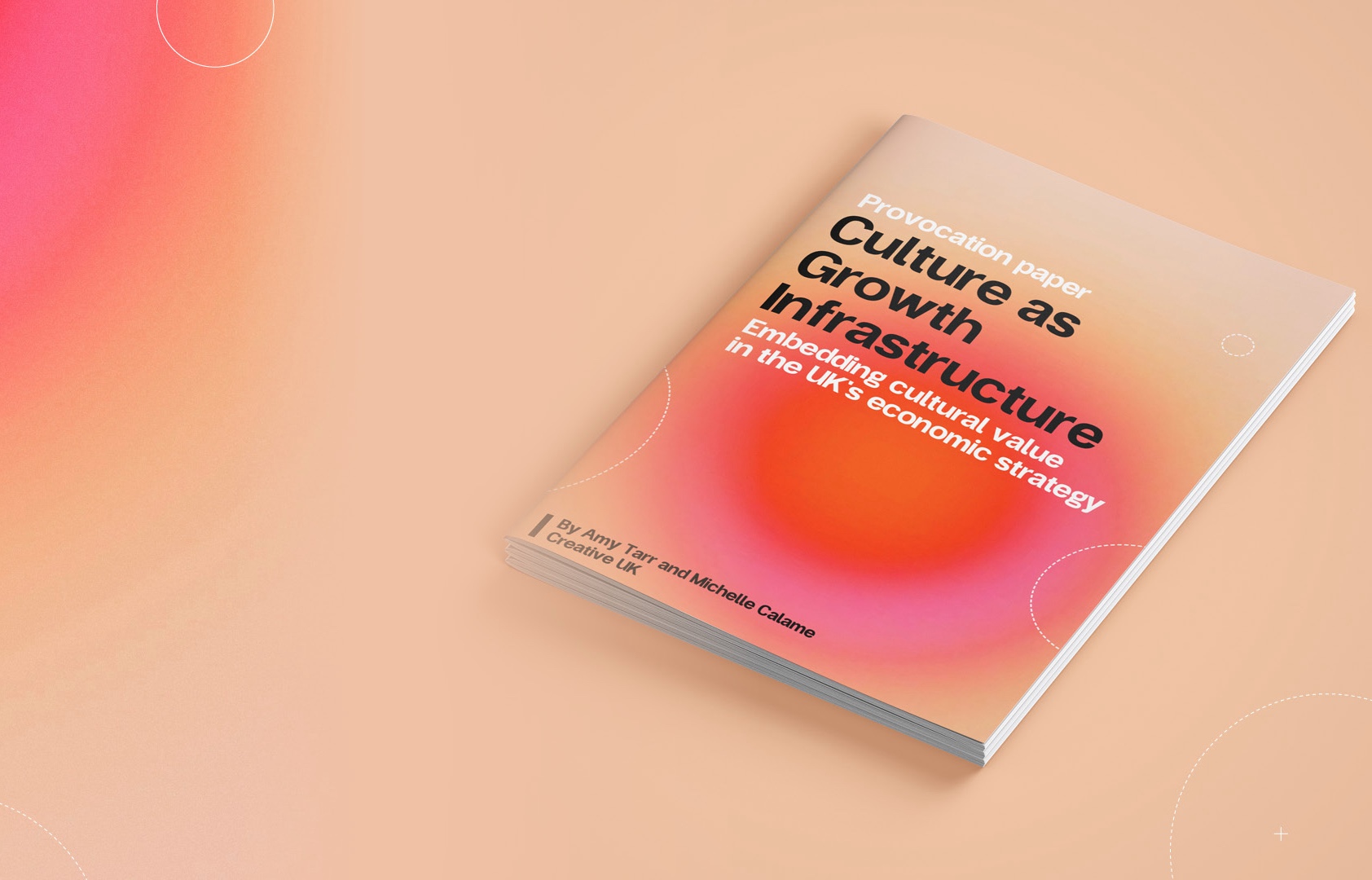
Report shows ‘work to do’ to open up the creative industries – with clear need for interventions noted in Sector Plan
View report: report.wearecreative.uk/perception-and-potential
A new report, designed to map public perceptions of creativity in the United Kingdom, has found evidence of a clear generational and class-based divide when it comes to how creative careers are valued – and the role creativity plays in boosting the economy,
Perception & Potential: Public Attitudes Towards Creativity in the UK, published today by the sector’s national membership body, Creative UK, is based on a survey of over 1000 respondents in January 2025, undertaken by Portland Communications.
It finds that a majority of younger adults (aged 18-24) and those from lower socio-economic backgrounds do not believe creative careers are a viable option – and are less likely to view the creative industries as a key driver of the economy than individuals aged over 55 (63%) and from higher socioeconomic groups (72%).
According to the latest UK Government statistics, the Creative Industries employ 2.42m workers (or 7% of the UK workforce). Of this number, 78% of the workforce identify as being from a more advantaged socio-economic background.
Creative UK Chief Executive, Caroline Norbury OBE, has characterised this as representative of a “significant problem… suggesting unequal exposure to creative opportunities and education.”
She has urged a focus on interventions in the younger generation – including stronger careers advice and access to creative apprenticeships, as well as greater investment in teachers and schools – areas which were addressed in the UK Government’s Creative Industries Sector Plan, published in June 2025.
The report also pointed to a key perceptions issue around economic contribution of the sector. While a majority of people acknowledge the creative industries’ economic importance (64%), few express strong conviction (19%) and a notable minority remain unconvinced (10%).
The results also suggests the public are more likely to value creativity and creative skills for their social benefits (61%), such as community building and health, than their contribution to driving innovation and growth.
The cultural and creative industries GVA contribution is around £125bn annually – almost 6% of the economy – more than life sciences, automotive manufacturing, aerospace and the oil and gas sectors combined.
Commenting on the report, Caroline Norbury OBE said: “This report demonstrates that we still have work to do to change public perceptions about creativity. It’s worrying that so many young people – particularly those from less advantaged backgrounds – see creative careers out of their reach. These are our future designers, producers, actors, musicians, developers, architects, and writers – their voices deserve to be heard, and it’s our job to ensure that pathways to these important industries are clear and accessible.
“The good news is that a clear majority of the public value creativity for the role it plays in building healthy communities, driving social change and improving wellbeing. It’s particularly encouraging that young people see its potential to tackle the challenges of our time. The Sector Plan outlines clear plans to address the creative education and skills – and I am hopeful that with the right interventions, we can overcome these challenges. Creativity will always be for everyone – not the privileged few.”
BAFTA-winning Actress Vicky McClure said: “Creative careers should be accessible to everyone – no matter your background. It is our collective duty to ensure that our young people not only believe this, but see clear access routes to industry. The UK’s creative industries are world-leading – but we must do more to ensure that the talent of tomorrow is diverse and representative. To achieve this, we need to change perceptions about what creativity is – and who it’s for. Everyone can be creative.”
Professor Andy Salmon, Bath Spa University, said: “This report is a division bell. Continued failure to address the recommendations would equal our acceptance of creativity for the few, economic self-harm, siloed responses to global challenges where all the evidence points to an intensified need for cross sectoral creative solutions. If creativity is a national treasure, it is also the key to our sustainable future. This report reveals that although we value creativity, we have yet to understand its real potential for the 21st century.”
Notes to Editors
About Creative UK: Creative UK is the national membership body for the Cultural and Creative Industries. We exist to champion creativity in its widest form – representing world-leading organisations from sectors as diverse as advertising, animation, architecture, broadcasting, crafts, design, digital, education, fashion, games, heritage, museums, music, performing arts, photography, publishing, theatre, TV, visual art and more.
We are an independent not-for-profit, which uses the insight and experience of our members to help shape relevant government policy and advocate for meaningful change. Change that will benefit UK businesses, citizens and communities.
Our vision is a world where creativity is valued and recognised as the driving force for our future. We’re so passionate about this that we put our money where our mouth is: through own landmark investment funds, we’ve directly invested millions of pounds into creative businesses over the last decade.
Our team is based across the UK, and we work closely with Local and Combined Authorities to support creative talent, whilst delivering hands-on support – spanning business diagnostics, mentoring and investment readiness.
Our Filming in England service is a dedicated and bespoke production service to feature film and high-end TV productions looking to film in England, outside of London.
About Perception & Potential: Public Attitudes Towards Creativity in the UK: This project was initiated by Creative UK and undertaken with support from Portland Communications, a member of the British Polling Council. Significant thanks are owed to Gabriel Milland, Jude Ryan-Gray and Leon Davies at Portland Communications for undertaking the initial baseline poll, which formed the backbone of this paper.
About the Cultural and Creative Industries in the UK: The cultural and creative industries (CCIs) GVA contribution is around £125bn annually. That’s around 6% of the economy – more than life sciences, automotive manufacturing, aerospace and the oil and gas sectors combined.
The sector employs more than two million people, 28% of which are self-employed – compared to 14% of all workers in the UK – and enriches public life through cultural, educational and economic contributions.1 Despite the sector’s clear economic and social significance, public perceptions of creativity, creative careers and education suggest negative views about their value, viability and accessibility persist
Related news

